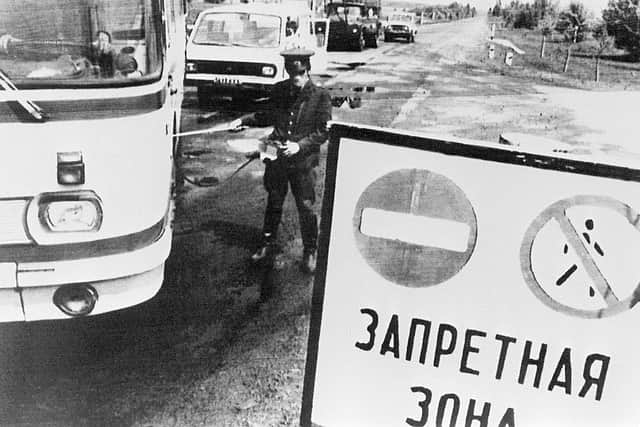Mutant wolves in Chernobyl appear to have developed resistance to cancer - according to new study
and live on Freeview channel 276
Mutant wolves living in Chernobyl appear to have developed a resistance to cancer, according to new research.
The city, located in Ukraine was abandoned in 1986 after its nuclear power plant reactor exploded, causing extensive radiation. All 100,000 residents were evacuated, with the Chernobyl Exclusion Zone (CEZ) put in place to prevent people from entering a 1,000-square-mile zone.
Advertisement
Hide AdAdvertisement
Hide AdWildlife has reclaimed the area with packs of wolves thriving and also seeming to be resistant to the toxic radiation according to a new study, with findings that may help scientist fight the disease in people.
Dr Cara Love, an evolutionary biologist and ecotoxicologist at Princeton University has been researching how the wolves have managed to survive life in the exclusion zone despite the high rates of radiation.
In 2014, Dr Love and a team of researchers visited the CEZ and put GPS collars on the wolves which would track their movements but also their radiation exposure. They also took blood samples from them in order to understand how they respond to the cancer-causing radiation.


Dr Love explained: "With the specialised collars, the researchers can get real-time measurements of where the wolves are and how much radiation they are exposed to."
Advertisement
Hide AdAdvertisement
Hide AdReported by the Society of Integrative and Comparative Biology, the study discovered that Chernobyl wolves are exposed to upwards of 11.28 millirem of radiation everyday for their entire lives. Which is over 6 times the legal safety limit for the average human.
Dr Love found that similar to cancer patients undergoing radiation treatment, the wolves have altered immune systems, with the research identifying specific regions of the wolf genome that seem resilient to an increased cancer risk.
Human research has already discovered some of the mutations that increase cancer risk, including BRCA which makes it more likely for a person to develop breast cancer. The hope is that Dr Love's research will identify protective mutations that will increase the odds of cancer survival in humans, thanks to the help of Chernobyl's wolves.
However, the Covid-19 pandemic and ongoing war in Ukraine has prevented Dr Love and her team from returning to Chernobyl to continue their research. She said about returning to the region: "Our priority is for people and collaborators there to be as safe as possible."
Advertisement
Hide AdAdvertisement
Hide AdSarah McCann is NationalWorld’s Entertainment and Trends Writer, who specialises in stories around TV, Film and Health. If you liked this article you can follow Sarah on X (Twitter) here. You can also share your thoughts in the comment section below.
Comment Guidelines
National World encourages reader discussion on our stories. User feedback, insights and back-and-forth exchanges add a rich layer of context to reporting. Please review our Community Guidelines before commenting.
